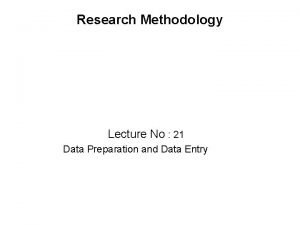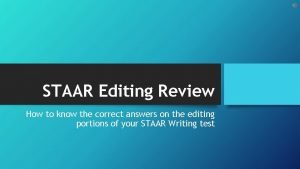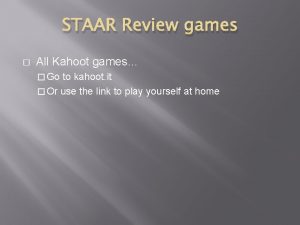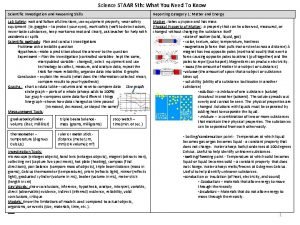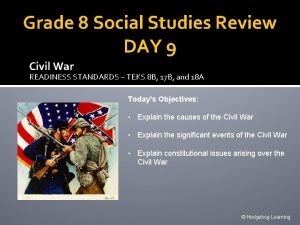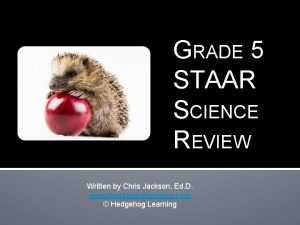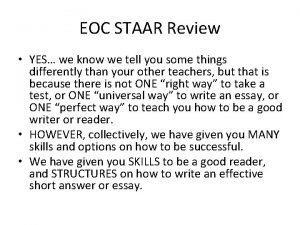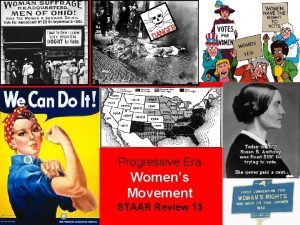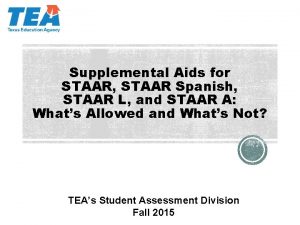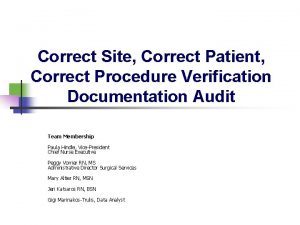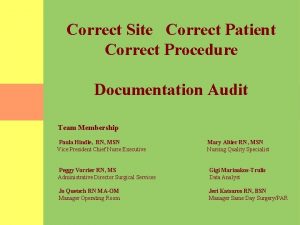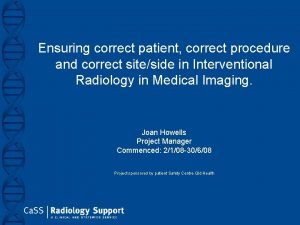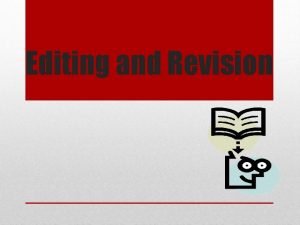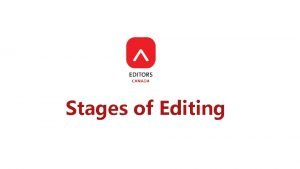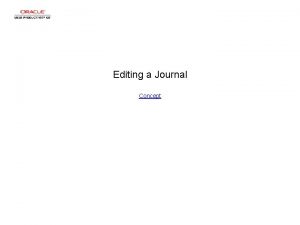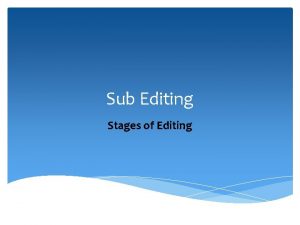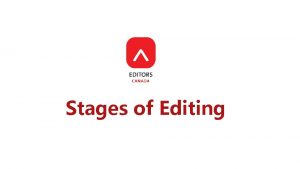STAAR Editing Review How to know the correct















- Slides: 15

STAAR Editing Review How to know the correct answers on the editing portions of your STAAR Writing test

Editing Versus Revising • The first thing to do when taking the STAAR writing multiple choice section is to determine whether the questions over a particular passage cover editing or revising. • You can do this by looking at the directions located at the top of the passage. If they ask you to look for revisions, you are revising. If they ask you to look for corrections, you are editing.

So, what is editing? • Editing is correcting an essay, story, or whatever passage for spelling, capitalization, punctuation, verb tenses, etc. • This Power. Point will teach you every rule that you will need to know to pass the STAAR Writing’s editing questions.

Verb Tense: Past/Present • If the story is told in past/present tense, the ENTIRE story must remain in past/present tense. • Example: • The research showed that when only a portion of the cookie was dunked, the cookie (lasts/lasted) four times longer. • The sentence MUST stay in the same tense.

Misspelled Words • One of the most common types of editing questions is regarding misspelled words. • Sometimes, the words are simply spelled wrong. • Other times the words might be correctly spelled but the wrong word. • Example: • Using the word tall instead of tail or tell. • It is important to read the words carefully. If you think it might be a spelling mistake, look the word up in the dictionary to be sure.

Apostrophes • The apostrophe s (‘s) at the end of a word or name is used to show ownership of an object, feeling, etc. • Example: • The girl’s room was messy. • Lisa’s book was missing. • That is someone else’s problem. • The s apostrophe (s’) is used to show when a plural group has ownership of something. • Example: • The boys’ jackets were too small. • You do NOT use an apostrophe when showing a word is plural. • Example: • My students are working on their test.

Apostrophes Continued • The other reason that you might use an apostrophe is to show a contraction. • Example: • We don’t want to do that. • He hasn’t finished.

Review • To receive credit for completing this Homework Assignment, you MUST follow the link below and complete the quiz. Editing Quiz Day 1

Proper Nouns • Proper nouns must always be capitalized. • They are the name of a specific person, place, or thing. • Example: • Prairie Vista Middle School is the best. • Mrs. Shaddox is amazing. • Be careful of mom and dad. If you use it as a name, you must capitalize it. • Example: • I want some milk, Mom. • My dad is cool.

Semicolons • A semicolon joins two complete sentences together that are closely related. • It takes the place of your FANBOYS (for, and, nor, but, or, yet, and so) and a comma. It can also take the place of a period in two unconnected sentences. • Example: • We are taking a test, but kids will not be quiet. • We are taking a test; however, kids will not be quiet. • I love my dogs. They are awesome. • I love my dogs; they are awesome.

Double Negatives • You can’t have two negatives in the same sentence. • Example: • I didn’t do nothing. I didn’t do anything. • Without no homework, I was able to play video games. Without any homework, I was able to play video games.

Review • To receive credit for completing this Homework Assignment, you MUST follow the link below and complete the quiz. Editing Quiz Day 2

Its Versus It’s • The word its is possessive. • Example: • The dog buried its bone. • The word it’s is a contraction for it is. • Example: • It is time for work. It’s time for work.

Complex Sentences • A complex sentence is a combination of two sentences joined together using an “A WHITE BUS” word. • An “A WHITE BUS” word can come at the beginning or in the middle of a sentence. • If it is in the beginning, there MUST be a comma after the first complete sentence. • There is no need for a comma if the A WHITE BUS word is in the middle. It is the author’s choice. • Example: • Even though living in the country was great, I love the city life even better. • I love the city life even better even though living in the country was great.

Review • To receive credit for completing this Homework Assignment, you MUST follow the link below and complete the quiz. Editing Quiz Day 3
 Data preparation process in research methodology
Data preparation process in research methodology Linear and nonlinear editing
Linear and nonlinear editing Staar revising and editing
Staar revising and editing Us history eoc review activities
Us history eoc review activities Kahoot
Kahoot 8th grade science staar review reporting category 4
8th grade science staar review reporting category 4 Hedgehog learning 5th grade science
Hedgehog learning 5th grade science Day 9 grade 8 social studies staar review
Day 9 grade 8 social studies staar review Science staar review
Science staar review English 1 staar review
English 1 staar review Biology staar review
Biology staar review Jeopard animal
Jeopard animal Staar
Staar Know history know self
Know history know self Do deep generative models know what they don’t know?
Do deep generative models know what they don’t know? I know who goes before me i know who stands behind
I know who goes before me i know who stands behind
